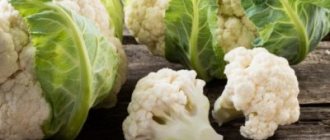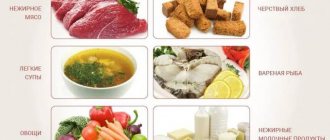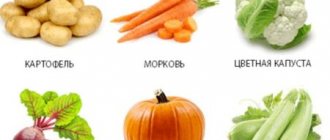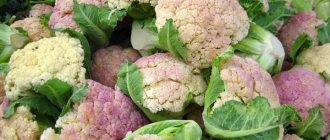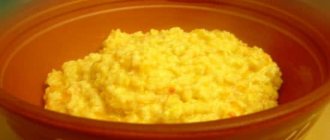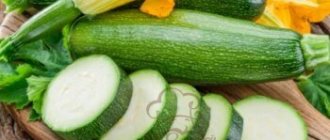Some monotony of nutrition during inflammation of the pancreas forces you to look for something new. The diet is especially lacking in vegetables, such as cabbage - familiar, accessible and irreplaceable.
It is good pickled, raw in salads, cooked in casseroles. However, patients with pancreatitis become quite suspicious, and bodily suffering prompts caution. Reasoning appears - is it possible, is it useful, is it harmful. Cabbage for pancreatitis is also subject to careful analysis by scrupulous patients.
Many species allow you to find the variety that can be used in dishes with damage to the pancreas.
Is it possible or not?
There is an opinion that in case of pancreatitis it is necessary to completely abandon all varieties of cabbage, which is not entirely true. This vegetable, useful in all respects, has several types, many of which are recommended for inflammation of the pancreas, while others are prohibited. Also, the possibility of using cabbage for preparing dishes for patients with pancreatitis largely depends on the methods of preparing this vegetable, which must be taken into account.
From a medical point of view, it is impossible to come to a consensus and unequivocally answer the question - is it possible to eat cabbage when suffering from pancreatitis, or should patients with such a diagnosis forever forget the taste of borscht, cabbage soup made from fresh or sauerkraut, as well as other popular and favorite dishes. You should know that, in addition to the familiar white cabbage, there are many types of cabbage, each of which has its own taste and beneficial properties. Varieties such as Brussels sprouts, cauliflower, kohlrabi, Peking sprouts, and red cabbage are no less useful and loved. Many of them, as dishes prepared correctly, will be useful for pancreatitis, as they are rich in vitamins and contain minerals necessary for the body.
Benefit or harm
No one will argue that cabbage as a food product will be useful for a healthy body, and what varieties of this vegetable to use does not play a big role. But in the case of pancreatitis, when inflammation of the pancreas occurs, poor nutrition can cause an exacerbation of the disease and significantly worsen the well-being of patients. Patients with this pathology suffer from insufficient pancreatic function, which can result in diabetes mellitus.
When treating pancreatitis, especially exacerbations of this disease, it is necessary to adhere to many restrictions and make changes to your usual lifestyle, including diet. Only fresh white cabbage is completely prohibited, and dishes made from it, like other varieties of this vegetable, remain approved by gastroenterologists.
Sauerkraut for pancreatitis
As for sauerkraut, it can also be included in your diet, but not as a daily dish, during periods of stable long-term remission, stewed or boiled and not in large quantities, one serving should not exceed one hundred grams per day. Cabbage leaves that are intended to be used for food should not be hard and rough; it is better to choose young and tender leaves from the middle of the head of cabbage.
The nutritional benefit of sauerkraut for inflammation of the pancreas lies in the increase in lactic acid in it after fermentation. Thanks to this quality, favorable conditions are created in the human intestine for the life of beneficial microflora.
Is it possible to eat sauerkraut
It contains a huge amount of vitamins and minerals, and also has a bright and rich taste. It is often used as an independent dish on the holiday table or included in the everyday menu. But is there any benefit from sauerkraut for pancreatitis and will its use cause a deterioration in the patient’s condition?
sauerkraut
Gastroenterologists are of the opinion that the use of this dish leads to irritation and inflammation of the gastrointestinal mucosa. In patients with pancreatitis, bowel movements are disrupted and nausea occurs. Adverse effects on the gastrointestinal tract are due to:
- the presence of a large amount of coarse fiber, which has a stimulating effect on the production of pancreatic secretions and intestinal function;
- increased salt content, leading to irritation and swelling of the gastrointestinal mucosa;
- a high content of lactic acid is also a negative factor and can provoke a worsening of the condition.
- it is necessary to completely exclude it from the diet of patients with pancreatitis, both at the time of exacerbation of the disease and during the period of remission.
In some cases, doctors allow the use of sauerkraut. Some recipes for pancreatitis contain sauerkraut. It should be used for food only in boiled form after thorough washing. This allows excess acid to be removed. It is important to understand that the amount of ingredient in a stew or soup should be minimal. And at the first signs of deterioration, you need to exclude it from your diet.
Seaweed for pancreatitis
Sea kale only conventionally bears this name; this sea plant has nothing to do with the cruciferous family. However, the beneficial substances contained in it and which are necessary for the health of the pancreas make this product simply irreplaceable. Of course, the presence of essential oils in seaweed can irritate the intestinal and gastric mucosa, which will certainly affect the condition of the pancreas. But, when stewing or during cooking, they are completely destroyed, but useful microelements in the form of nickel and cobalt, contained in seaweed in huge quantities, do not suffer when cooked by any means and are completely preserved.
It follows from this that properly steamed or boiled seaweed is recommended to be eaten not only during periods of remission, but also during exacerbations, and to do this constantly, but in small portions. The beneficial properties of this cabbage are explained by its composition, namely:
- Iodine, calcium, nickel and magnesium;
- Manganese, cobalt and iron;
- Phosphorus, sodium and potassium;
- Vitamins A, C, PP, group B;
- Beta-carotenes.
It is the content of trace elements in the form of potassium and nickel that are necessary for the health of the pancreas and contribute to its restoration.
What varieties are allowed to be consumed?
For a person suffering from pancreatic pathology, it is important to carefully select and include any type of cabbage in the diet, since the reaction of the diseased organ to each type will be different:
- Cauliflower, which has soft fiber, is not dangerous for pancreatitis, since it contains a large amount of protein, folic and ascorbic acids, and does not irritate the pancreatic mucosa. The biochemical composition of the product allows it to be easily absorbed and helps the inflamed organ to recover. To be safe, it is best to consume the ingredient in soups, purees or stews. You should not worry that heat treatment will destroy all the vitamins - the beneficial substances will remain in the prepared dish.
Important! Just under no circumstances should you fry cabbage. You can change the taste of the dish by adding milk sauce.
When purchasing vegetables, you must choose fresh heads of cabbage, without darkening, indicating long-term storage.
- Peking (Chinese) cabbage promotes the full functioning of the digestive system. For pancreatitis, it is recommended to consume it raw. The vegetable is rich in nutrients, ascorbic acid, minerals, vitamins E, PP, A, which are preserved in winter. It is not recommended to use during exacerbation of the inflammatory process.
- Brussels sprouts are useful for recovery and improvement of pancreatic functions during pancreatitis. Ascorbic acid, present in the vegetable, regulates the functioning of various body systems. In addition to improving the condition of the diseased organ, it helps in the fight against arrhythmia, high blood pressure, and atherosclerosis. Cabbage juice has a positive effect on the process of restoring the activity of the gland.
By following the recommendations of proper nutrition, you can supply the body with useful substances (minerals, vitamins, microelements) without irritating the mucous membrane
- Broccoli is rich in vitamins A, C, E, H, K, PP, group B and minerals that have a beneficial effect on the body. In addition, broccoli has a low calorie content, which allows it to be used in dietary nutrition.
Important! Although it is allowed to expand the diet, “heavy” and irritating dishes must be permanently excluded from consumption.
It is generally accepted that sauerkraut is healthier than fresh cabbage due to its high content of vitamin C. Microorganisms and organic acids have a beneficial effect on the state of intestinal microflora. The question arises: is it possible to eat sauerkraut with pancreatitis?
If discomfort in the intestines, nausea and stool disturbances occur, it is necessary to review the diet, removing foods that have a destructive effect on the pancreatic mucosa
Brussels sprouts
A vegetable such as Brussels sprouts allows you to solve several problems that arise in patients with pancreatitis:
- Helps normalize the functions of the digestive system;
- Increases the body's immune defense;
- Helps fight high blood pressure and help reduce it;
- Relieves the symptoms of atherosclerosis;
- Eliminates changes in the state of the cardiovascular system, such as arrhythmia and coronary insufficiency.
Eating dishes from this vegetable plant has a beneficial effect not only on the pancreas, helping to eliminate inflammation in it, but will also be beneficial for the entire digestive system.
White cabbage for pancreatitis
Cabbage such as white cabbage must be excluded from your diet for a long time, for the very reason that it contains fiber, and a lot of it, which is difficult for the body to absorb. To process fiber, a high content of certain gastric enzymes is necessary, and these are precisely what is lacking in patients with pancreatitis. That is why the consumption of white cabbage by such patients can cause serious problems in the intestines with the manifestation of flatulence, dyspepsia, bloating and increased stomach acidity, and in the future threatens to worsen the underlying disease and all its accompanying pathologies.
Stewed cabbage for pancreatitis
All restrictions mainly apply to raw white cabbage; patients with inflammation of the pancreas are prohibited from eating it. This applies not only to moments of exacerbation, but also to periods of remission and even after all symptoms of the disease have been eliminated. Fresh cabbage juice increases acidity in the stomach and also increases the activity of secretory ability in the pancreas, which is unnecessary irritation for the inflamed organ and will negatively affect its condition.
As already mentioned, the high fiber content in this vegetable due to a lack of enzymes also serves as a categorical ban on consumption.
Therefore, white cabbage prepared by stewing, baked, or in ready-made soups can be used in the menu of patients with pancreatitis, but it is infrequent and it is better to do this during periods of prolonged remission. When cooking, it is not recommended to use a lot of oil; in order to avoid unnecessary stress on the gland, cabbage with the addition of carrots or zucchini will bring even greater benefits.
The best recipes for inflammatory processes in remission
We offer several versions of preparing stews from different varieties of vegetables.
Classic recipe from cabbage variety
- Rinse in clean water.
- Remove the upper hard and tough leaves and stalks.
- Cut the head of cabbage into large pieces and finely chop.
- Place the chopped vegetable in a saucepan, add coarsely grated carrots and finely chopped onion.
- Pour in a little water and vegetable oil.
- Simmer until soft, stirring occasionally.
- 30 minutes before readiness, add a drop of tomato paste.
To make the dish more filling, you can add lean meat options, such as chicken, veal, turkey, and so on.
White cabbage variety in milk
This recipe allows you to prepare a tasty and nutritious meal:
- Take some cabbage and chop finely.
- Simmer the vegetable in a small amount of water with the addition of vegetable or butter and minimal salt for 10 minutes.
- Then add 0.5 cups of milk (low fat or diluted with water) and cook until soft.
This dish, due to the presence of milk, has a delicate and soft structure, thereby not loading the gland during digestion.
Cauliflower dish
This type of vegetable cooks much faster due to its delicate structure. Prepared in the following order:
- Disassemble the head of cabbage into inflorescences.
- Bring the water to a boil, add a little salt and immerse the prepared pieces in boiling water for about 5 minutes.
- Then put in a frying pan and add grated carrots. It is not necessary to add onions.
- Pour in a little water and oil, cover the dish with a lid.
- Simmer over low heat.
If you are sick, you can eat cauliflower every day.
Braised Chinese cabbage
Dishes made from this cabbage are allowed only with stable remission. To prepare it, you need:
- Chop the cabbage leaves as finely as possible.
- Do not add spices, and salt should be present in minimal quantities.
- Place in a saucepan, add a little water and a drop of oil and simmer until done. You can add carrots or zucchini.
- A few minutes before readiness, add the greens.
Very tasty Beijing stew with the addition of rice or apple.
Brussels sprouts dish
If the disease worsens, it is better to avoid eating this cabbage. The peculiarities of its extinguishing consist in the following stages:
- Finely chop the main ingredient, grate the carrots.
- Place in a saucepan
- Add finely chopped onion (optional).
- Add a little vegetable oil, a little salt.
- Simmer for 20 minutes until soft.
Serve as a separate dish or with a piece of meat.
How to cook kelp
Regarding seaweed, it is prepared as follows:
- Wash fresh seaweed, drain and cut into pieces 10 cm long.
- Then place in a saucepan, add cold water and cook for 10 minutes.
- In this case, after 5 minutes from the moment of boiling, the water must be drained and fresh water added, then cook for another 5 minutes.
- Then remove from heat and rinse in cold water.
Cut like noodles and use for other dishes.
Cauliflower for pancreatitis
Cauliflower is well known to buyers; it is characterized by its low calorie content, delicate structure, minimal fiber content and excellent taste. When preparing this vegetable, you do not need any seasonings or spices; just boil it, add a small amount of oil, and a tasty and healthy dish is ready.
Thanks to its properties, cauliflower, which has managed to firmly settle in kitchens and makes the daily menu more varied, increases digestive activity, eliminates constipation, normalizes the acid level of gastric juice, takes part in the synthesis of substances beneficial to health, neutralizes waste and toxins and promotes their elimination from the body. . It contains a large amount of plant proteins, vitamins C, U and group B, the lack of which negatively affects health. In order not to waste nutrients and not weaken their beneficial effects on the gastrointestinal tract, it is not recommended to use long-term heat cooking methods; it is better to eat cabbage boiled or stewed.
Chinese cabbage for pancreatitis
This variety of cabbage is distinguished by soft and delicate fiber, so during periods of remission with pancreatitis it can be eaten with virtually no restrictions. In case of exacerbations, you should still abstain from it, despite the rich content in the form of pectin substances, carbohydrates, proteins and vitamins B and PP. It is consumed as ready-made dishes, along with carrots, zucchini and herbs. Thanks to this content, these vegetables serve as support for the pancreas and prevent the development of a pathology associated with inflammation of this organ, such as diabetes.
Brussels sprouts during remission of chronic pancreatitis
After the exacerbation of the disease subsides (about 3-4 weeks from the onset of the attack of pancreatitis), you can try introducing Brussels sprouts into your diet. Like other new products, they start using it in small quantities - 1-2 tbsp. boiled vegetable puree. If tolerated well, the volume of cabbage is gradually increased to 100–150 g per day. If Brussels sprouts cause discomfort (bloating, pain, nausea, etc.), they should be removed from the diet.
During the period of remission of chronic pancreatitis, Brussels sprouts are allowed in boiled, stewed and baked forms. You can use it to cook cabbage soup, puree and puree soups, serve it as a side dish (boiled or stewed, separately or with other vegetables), bake it with cheese and scrambled eggs. Tiny heads of cabbage can be used to decorate holiday dishes and salads.
Brussels sprouts are contraindicated for patients with pancreatitis in fresh, fried, pickled form and in dishes with hot sauces, spices and mushrooms.
Broccoli
Eating this cabbage often contributes to the appearance of colic, leads to stool disorders in the form of diarrhea and is accompanied by bloating. Therefore, during an exacerbation of pancreatitis, it is better to refrain from consuming it and introduce it into food after potatoes and zucchini. Broccoli can be eaten in the form of casseroles, combined with omelettes, added to vegetable puree soups, made into puddings and served chopped as a side dish. Broccoli contains a large number of various vitamins, minerals, and most importantly, this vegetable is rich in vegetable protein, which is essential when restoring damage to the pancreas. The presence of chlorophyll increases the stability of the cell membranes of the gland and protects cells from the destructive effects of pancreatic enzymes.
The daily dose of broccoli is up to 200 g per day.
Does the cooking method matter?
The method of preparing cabbage is of great importance in this matter. One of the most common in our country is pickling. However, for any disease of the pancreas and in any condition (acute or chronic), the use of this dish is strictly prohibited for many reasons.
Let us list the reasons why pickled vegetables should not be used for pancreatitis.:
- Acids irritate the mucous membrane of the stomach and intestines.
- Increased gastrointestinal motility negatively affects bile secretion.
- A large amount of salts causes fluid retention and swelling. Swelling of pancreatic tissue increases pain and inflammation.
Another common way to prepare cabbage is stewing . You can add other vegetables, such as carrots.
Attention! During cooking, you should not add onions, garlic, hot herbs or any spices, as they increase the activity of the digestive glands.
Read more about the properties of cabbage for which diseases you should refrain from consuming it here.
Contraindications
White cabbage has particular contraindications for use in food for inflammation of the pancreas. Gastroenterologists are more favorable towards other varieties of this vegetable; some of them are allowed to be eaten even during exacerbations, and only the consumption of white cabbage is subject to strict restrictions. What are the contraindications for this and other varieties of cabbage?
- Any type of cabbage, and especially the white variety, greatly increases the secretory ability of the digestive glands, in particular the pancreas, which can easily provoke an exacerbation or the development of complications.
- The large amount of fiber contained in some types of cabbage is difficult to digest, and since pancreatitis requires a lack of enzymes necessary for digestion, undigested food accumulates in the stomach with the further development of flatulence and bloating.
- Cabbage juice has the ability to increase the acidity of the stomach, as a result, this negatively affects the stomach itself and the condition of the pancreas.
All this is more related to fresh white cabbage, since this particular form is contraindicated during periods of remission, not to mention during periods of exacerbation. But when prepared correctly, in the form of stewed or boiled, it can be eaten by those who have a persistent period of calm with no exacerbations. There are no contraindications in this case, but in everything you need to adhere to measures. It is better to prepare dishes from young cabbage and eat it in small portions.
What harm can sauerkraut do?
One of the most common and beloved dishes by many is sauerkraut. It contains many vitamins, minerals, as well as bacteria and organic acids that accumulate during fermentation during sauerkraut, providing its specific sour taste.
For pancreatitis, sauerkraut is completely prohibited (for any pathology - both acute and chronic), because it has a negative effect on the condition of the pancreas due to its following effects:
- Irritant effect of acids on the mucous epithelium of the stomach and intestines.
- Increased gastrointestinal motility, spasms of the stomach and intestines, which causes abdominal pain, nausea, vomiting, excessive gas formation, and intestinal upset.
- Fluid retention due to the large amount of salt in sauerkraut. Excess water causes swelling throughout the body. Swelling of the pancreatic tissue increases the pain syndrome and prevents the inflammatory process from subsiding.
Sauerkraut juice
During pancreatitis, it is possible, even recommended, to drink sauerkraut juice. To obtain a useful product, it must be fermented in a certain way according to a special recipe: salt should be taken much less than with ordinary fermentation, about 1 tablespoon per 1 kg of shredded cabbage (1 kg is about half a head of cabbage). The product is prepared without the use of other vegetables (carrots, onions, spices, other seasonings).
Cabbage juice contains many vitamins (C, PP, E, group B), microelements (iodine, sulfur, zinc and others), as well as pancreatin - a substance similar to a pancreatic enzyme. This composition of cabbage brine benefits the body, providing the following effects:
- removes toxins from the body,
- reduces cholesterol and blood sugar,
- prevents the formation of stones in the gall bladder, pancreatic ducts,
- improves digestion processes and the production of digestive enzymes.
Judging by the reviews of patients, it is recommended to drink 1-2 tablespoons a couple of times a week for chronic pancreatitis.
Healthy recipes for cooking cabbage
The benefits of cabbage for any diseases of the digestive system or pancreatitis largely depend on the method of its preparation. Gastroenterologists advise their patients to adhere to the following time-tested recipes when preparing dishes from various varieties of this vegetable.
- The healthiest way to eat cabbage is as a stew. For this purpose, the head of cabbage, cleared of the upper coarse leaves, is cut into small strips, removing all thickened and hard parts, after which they begin to stew without preliminary frying. Oil is added to a minimum, and you can add a more pleasant taste to the finished dish with the help of carrots and zucchini, which are stewed together with cabbage. It is better not to over-salt the dish and not to use irritating herbs and spices in it, as this is contraindicated for diseases of the pancreas.
- Patients with pancreatitis can safely eat steamed cabbage, using a special pan for this purpose - a steamer. You can find other methods of cooking using this method, the main thing is that the cabbage is soft and does not contain hard parts. Serve it ready-made with sour cream or topped with melted butter.
- Cabbage can be eaten as ready-made pureed soups, where it goes well with other vegetables and herbs. The broth should not be made from fatty meat; it is good if poultry or lean veal is used in this capacity.
Stewed cauliflower
Cauliflower takes less time to prepare, but its taste is not inferior to white cabbage varieties.
- First, the head of cabbage must be disassembled into inflorescences.
- Next, place the pieces of cauliflower in boiling salted water for five minutes.
- The boiled inflorescences are laid out in a frying pan, and grated carrots are added to them.
- You don’t have to add onions, it all depends on a person’s taste preferences.
- Add a little water and sunflower oil to the saucepan and then cover with a lid.
- The dish should be stewed, not fried, so the fire should be as low as possible.
For pancreatitis, cauliflower is great for daily nutrition. It comes in fresh and frozen form, it all depends on the time of year. This vegetable cooks very quickly, and all the beneficial minerals and vitamins simply do not have time to leave the product. In its composition and method of preparation, cauliflower is in many ways similar to broccoli. Even in taste, these varieties are not much different from each other.
Opinion of doctors and nutritionists
Gastroenterologists and nutritionists assure that the diet of patients with pancreatitis should be as varied as possible. An organism with such a disease, like no other, needs to be replenished with vitamins and nutrients necessary for a full existence. Therefore, such a healthy vegetable as cabbage cannot be completely ignored. It is necessary to eat a wide variety of its types, since many dishes from certain varieties and prepared in accordance with existing recommendations can be used in nutrition even during periods of relapse.
The main requirement for the dishes consumed is not to eat this vegetable raw, chew it thoroughly and not fry it. Vegetables for pancreatitis must be boiled; stewing, baking and steaming are allowed. By following these simple requirements, you will be able to maintain your health, eliminate any changes that have arisen in the condition of individual organs, and prevent the possibility of exacerbations.
